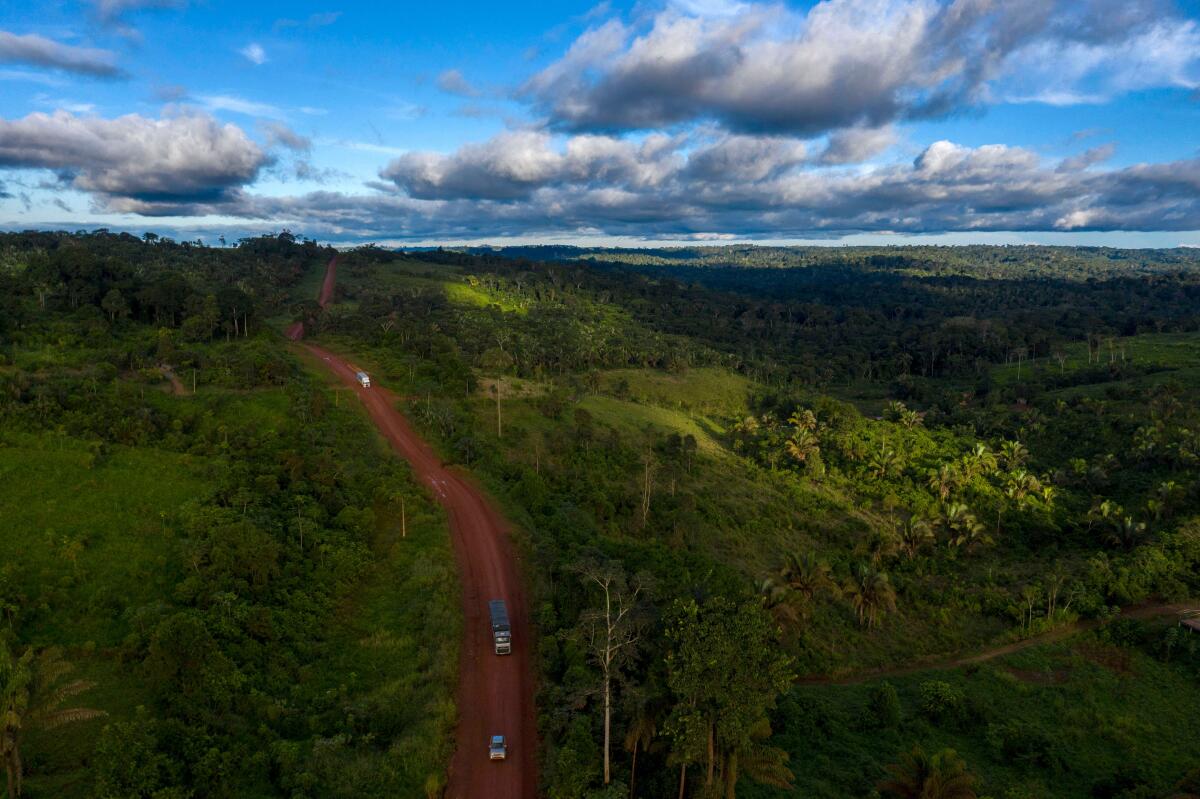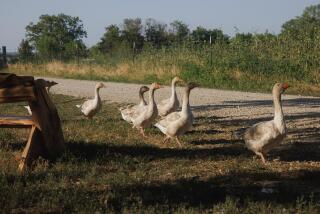Opinion: It turns out ranching doesn’t have to destroy the Amazon rainforest

Can ranchers help rescue the Amazon?
It’s an ecosystem like no other. One 19th century explorer called it “the last page of Genesis, yet to be written.” Brazil has been busy drafting that page ever since, sometimes to alarming results.
A fifth of the rainforest has been cleared for farms, cattle grazing and ambitious development schemes such as highways and megadams, too often by lawless means and for only fleeting wealth. Unless the economy, governance and culture of the region undergo a fundamental reset, scientists fear, the entire biome may be on track for irreversible dieback.
So it may sound paradoxical to suggest that beef cattle must be part of the Amazon solution. But that’s the only viable path forward.
We already know a lot about what hasn’t worked. About 40% of Brazil’s 218 million head of cattle graze in the Amazon basin, often under precarious conditions. It takes one to two hectares of pasture on average to sustain a single head of cattle. Even then, prosperity fades quickly. When pastures fail, ranchers traditionally hack their way deeper into the frontier.
The result is a swath of partially or severely degraded Amazonian landnearly the size of Great Britain, good neither for grazing nor planting — never mind the global climate. There’s the well-documented loss of rainforest that used to suck up carbon dioxide and pump out oxygen, and there’s the addition of ever more cattle: Livestock kick in nearly a fifth of all the methane — a super greenhouse gas, up to 80 times more potent than CO2 — that Brazil spews into the atmosphere every year.
That’s the challenge. Now here’s the good news: After decades of research, on top of sometimes devastating trial and error, Brazil today has the tools and experience to glean value from the land without trampling it under — even on Amazon ranchland.
For three generations, the Brazilian government’s agricultural research company, Embrapa, has led experiments to recuperate degraded rainforest and help ranchers produce more without toppling any more forest. Cattle farmers now know ways to expand their herds while keeping the forest standing, such as grazing under tree crops.
Another method is to intensify farm production by rotating livestock between prescribed quadrants of the ranch to optimize productivity, avoid overgrazing and replenish spent pasture. One study found that by boosting cattle productivity with these and other means, Brazil could meet demand for timber, beef and crops through 2040 without toppling any more forest.
One of the more promising innovations is refitting the ranch with forage more suitable to the humid tropics. After all, much of the Amazon frontier was settled by ecological strangers, who brought their foreign technology, customs and conceits with them. Many soon found that the exotic grasses from Africa and temperate zones that flourished in southern Brazil quickly failed under the punishing rains and tropical sun. A breakthrough came with amendoim forrageiro, or forage peanut, a broad-leafed leguminous plant that grows everywhere in Brazil, from the flower pots of shopping malls to the winter gardens of gated communities.
Agronomists at Embrapa discovered that by sowing amendoim forrageiro, farmers could keep the soil covered, prevent erosion and suck nitrogen from the air and into the soil, so easing the bill for expensive fossil-fuel-based fertilizer ($15.1 billion in 2021) imported from unreliable and perhaps illegal suppliers such as Russia. Less fertilizer means less carbon from livestock hurled into the atmosphere.
Scientific innovations alone can’t resolve the conflict between agriculture and rainforests. Making ranches sustainable is costly. Brazil has earmarked just 6.2 billion reais (around $1.2 billion) for pasture recovery, a wildly insufficient sum for the hundreds of thousands of economically precarious farmers.
Nor is it realistic to ban Amazon beef from markets and menus. Some 89% of Amazonia’s 1 million farmers are small producers, for whom beef and dairy cattle are an important household investment and a reliable hedge against bad harvests and inclement weather. There is no prospect for sustainably developing the Amazon basin without sustaining those who live and work there. Brazil today has the field-tested technology and managerial acumen to reinvent tropical farming. (Embrapa’s “tropical” wheat could turn Brazil from an importer to a global supplier this decade.) By combining advanced agronomics, policy incentives, vigilant governance and lending, and data-driven monitoring tools, Brazil could curtail plunder, scrub supply chains and keep livestock herders honest.
Properly done, this transformation could conceivably convert cattle farming from one of the Amazon ecosystem’s biggest liabilities into an asset. Success is hardly guaranteed and will undoubtedly take time. But you can bet the ranch it won’t happen at all as long as opportunists and outlaws make better money from resource plunder and razing the forest than by adopting green best practices.
Thanks to greening sensibilities and 21st century science, at least now we know what many of these best practices are. And that’s the best news for the Amazon that we’ve had in decades.
Mac Margolis is a journalist and the author of “Last New World: The Conquest of the Amazon Frontier.” Robert Muggah co-founded the Igarapé Institute, a Brazil-based think tank focusing on public safety and climate security.
More to Read
A cure for the common opinion
Get thought-provoking perspectives with our weekly newsletter.
You may occasionally receive promotional content from the Los Angeles Times.










